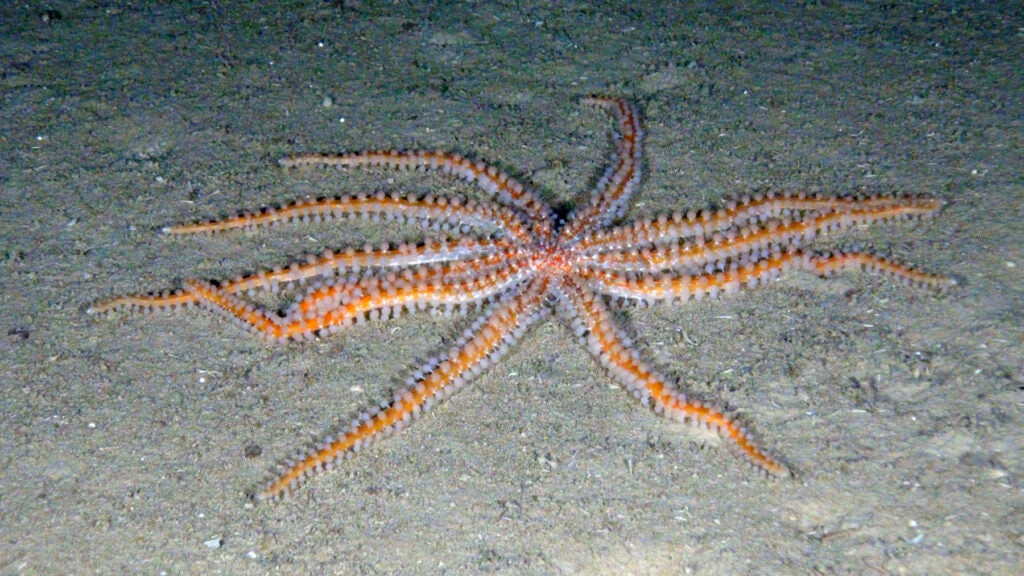Report | August 15, 2020
Diversity, distribution, and habitat associations of deep-water echinoderms in the Central Mediterranean

Abstract
Limited research effort in the Central Mediterranean deep sea has reported a lower species diversity in this area than in adjacent regions. With the recent advent of remotely operated underwater vehicles (ROVs), the deep sea has become more accessible to surveys, especially rocky benthic areas such as canyons and escarpments. The aim of the present study was to assess diversity, spatial and bathymetric distribution, density, habitat, and microhabitat associations of echinoderms in deep waters around the Maltese Islands. Video data were acquired through ROV surveys as part of the LIFE BaĦAR for N2K project, at depths of 216 to 1031 m. In total, 25 echinoderm taxa were recorded, including the first Central Mediterranean records of the sea stars Marginaster capreensis (Gasco, 1876) and Sclerasterias neglecta (Perrier, 1891), and the first record of the holothuroid Mesothuria intestinalis (Ascanius, 1805) from Maltese waters. Six species were observed deeper than their currently accepted depth range in the Mediterranean. The most abundant species were the crinoids Antedon mediterranea (Lamarck, 1816) and Leptometra phalangium (Müller, 1841), which formed very dense aggregations of up to 2900 individuals/1000 m2 in a small area to the south of Malta. This area also supports the only known Mediterranean population of the Atlantic sea star Coronaster briareus (Verrill, 1882). Bathymetric distribution varied for each species, and the overall echinoderm diversity seemed stable across the surveyed depths. Since previous deep-sea studies in the area were based on trawling surveys, many deep-sea echinoderm species are reported in the literature as occurring on sedimentary bottoms. However, the present study revealed that several occur more often on rocky substrata, corals, or anthropogenic objects than on sediments. Our study based on video footage also provided insights into the microhabitat of many deep-sea species, yielding information that is not obtainable through remote sampling.
(Via Springer)


